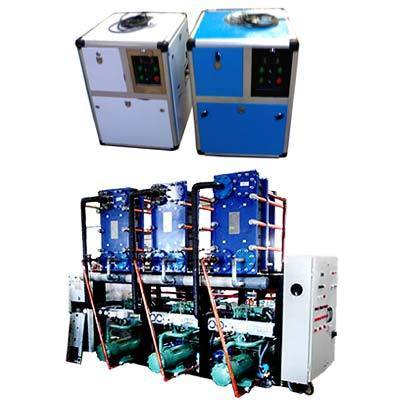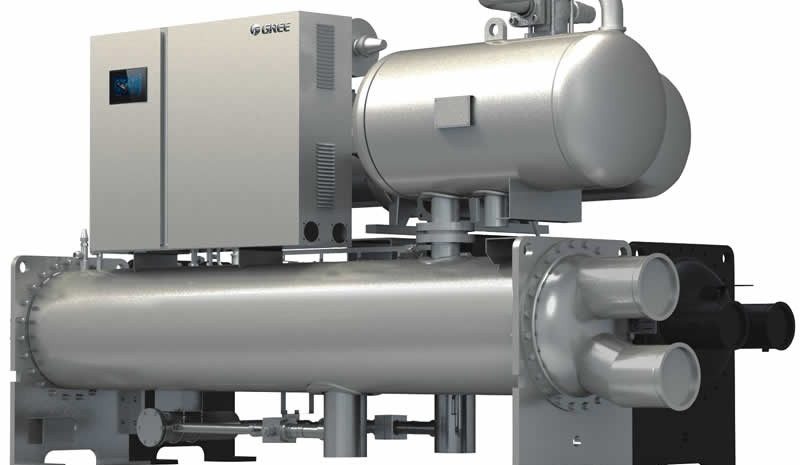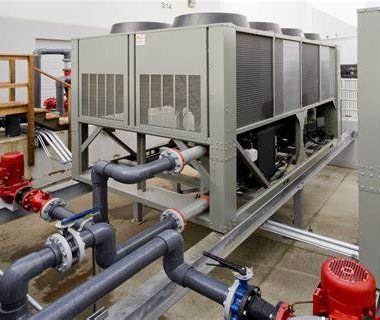A Beginner’s Guide to Chillers
A Beginner’s Guide to Chillers
Chillers are necessarily components in different businesses, giving essential cooling for forms, equipment, and spaces. If you’re new to the world of chillers, here’s a beginner’s guide to chillers, which direct to help you understand their basics:
1. What is a Chiller?
Definition:
A chiller may be a machine or system outlined to remove heat from a fluid, regularly water or a water-glycol mixture. It finishes this through a refrigeration cycle, creating chilled water that can be circulated to cool air, equipment, or industrial processes.
2. Types of Chillers:
Air-Cooled Chillers:
- These chillers utilize encompassing discuss to remove heat from the refrigerant, which is then circulated to cool the water. They are appropriate for smaller-scale applications and spaces with good ventilation.
Water-Cooled Chillers:
- Water-cooled chillers utilize water as a heat exchange medium. They are frequently more efficient than air-cooled chillers but require a separate cooling tower to dissipate heat.
3. Chiller Components:
Compressor:
- The compressor is the heart of the chiller, responsible for compressing the refrigerant gas, raising its temperature and pressure.
Condenser:
- The condenser is where the refrigerant discharges heat to the surroundings (either air or water), causing it to condense from a gas to a liquid.
Evaporator:
- In the evaporator, liquid refrigerant absorbs heat from the chilled water, turning it into a low-pressure gas.
Expansion Valve:
- The extension valve controls the flow of refrigerant into the evaporator, directing its pressure and temperature.
4. Chilled Water System:
In a ordinary chiller system, chilled water is circulated through channels to assimilate heat from different sources. The warm water returns to the chiller, where the heat is evacuated, and the cycle repeats.
5. Applications of Chillers:
Chillers are utilized in different businesses and applications, counting air conditioning for commercial buildings, cooling forms in fabricating, temperature control in medical facilities, and cooling equipment in information centers.
6. Energy Efficiency:
Effective chiller operation is significant for minimizing energy consumption. Customary support, proper sizing, and progressed controls contribute to vitality effectiveness.
7. Types of Refrigerants:
The refrigerant utilized in a chiller plays a part in its environmental impact. Advanced chillers frequently use environmentally friendly refrigerants with lower global warming potential.
8. Variable Refrigerant Flow (VRF) Systems:
VRF systems offer variable capacity and exact control, allowing different zones to be cooled or heated at the same time. They are regularly utilized in buildings with differing temperature prerequisites.
9. District Cooling Systems:
District cooling includes centralized chillers serving numerous buildings through an underground arrange. This approach enhances effectiveness and is common in urban planning.
10. Maintenance and Troubleshooting:
Regular maintenance, counting cleaning coils, checking refrigerant levels, and inspecting electrical components, is essential for ideal chiller execution. Understanding common issues and troubleshooting strategies is crucial.
11. Lifecycle Considerations:
When selecting a chiller, assessing its lifecycle cost, energy efficiency, and environmental impact is essential. Consider factors such as installation, maintenance, and end-of-life disposal.
Understanding the basics of chillers is the first step toward appreciating their importance in maintaining comfortable situations and supporting different industrial processes. Whether you’re included in building administration, industrial operations, or essentially curious about cooling innovation, a foundational knowledge of chillers is valuable.

A Beginner’s Guide to Chillers





Energy Efficiency in Chillers - Cool Fab Equipments February 16, 2024 at 7:52 pm
[…] minimizing natural affect, and complying with energy directions. A few components contribute to the energy proficiency of chillers, counting the plan, components, controls, and maintenance practices. Here are a few key […]
Chiller Trends and Innovations - Cool Fab Equipments February 20, 2024 at 1:51 pm
[…] Chiller innovation is persistently advancing to meet the expanding demand for energy efficiency, maintainability, and performance. A chiller trends and innovations are forming the future of chiller systems: […]
Plastic Injection Molding Chiller - Cool Fab Equipments February 20, 2024 at 2:35 pm
[…] plastic injection molding chiller processes, chillers play a significant part in maintaining optimal temperatures for molds, pressure driven systems, and […]
What is the difference between a chiller and an air conditioner? - Cool Fab Equipments May 06, 2024 at 2:52 pm
[…] is the difference between a chiller and an air conditioner? : Whereas both chillers and air conditioners are utilized for cooling purposes, there are a few key contrasts between the […]